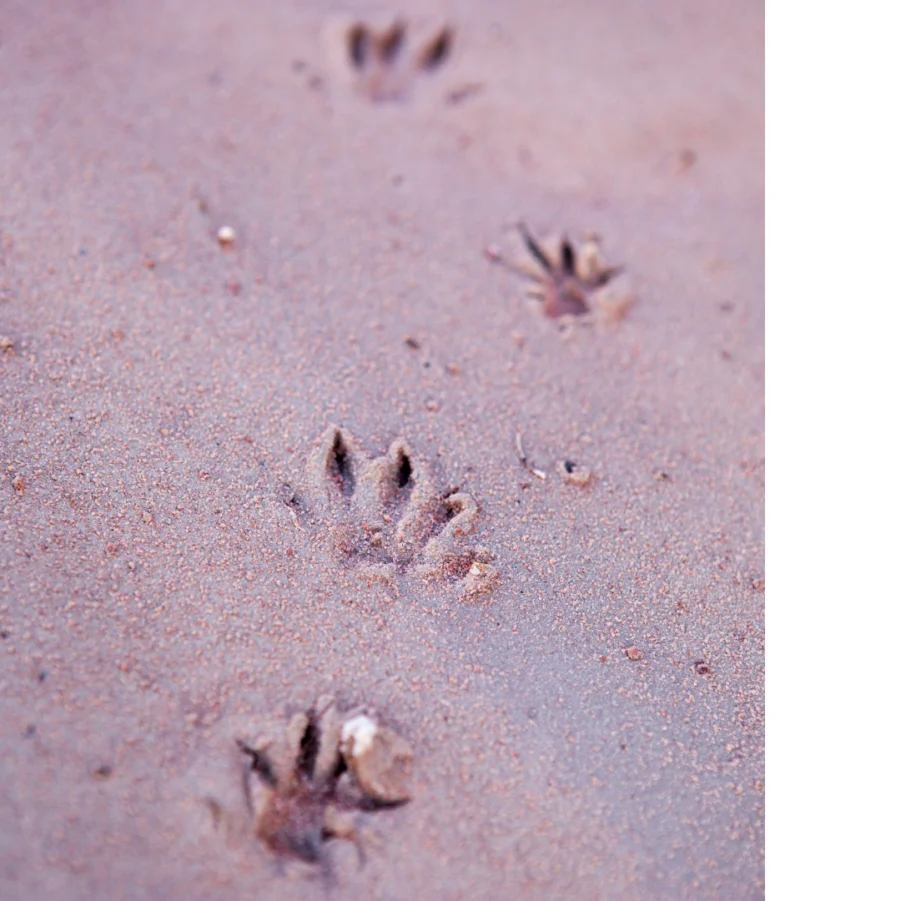Although spending time in nature has its own benefits, many people go outside to watch wildlife. Activities like birdwatching or visiting a pollinator garden are almost sure to deliver sightings during spring and summer. However, depending on the timing of your visit, animals might not always be active. Knowing key signs of wildlife to look for in nature can help you know who’s around.
By paying attention to these signs, you’ll be able to pick up on the hidden wildlife stories of places around you. You can impress your friends, learn new natural history, and deepen your connection with the outdoors.
In this post for Beginner Naturalist tips, let’s learn some basic signs of wildlife that you’re likely to find outdoors.
1. Tracks
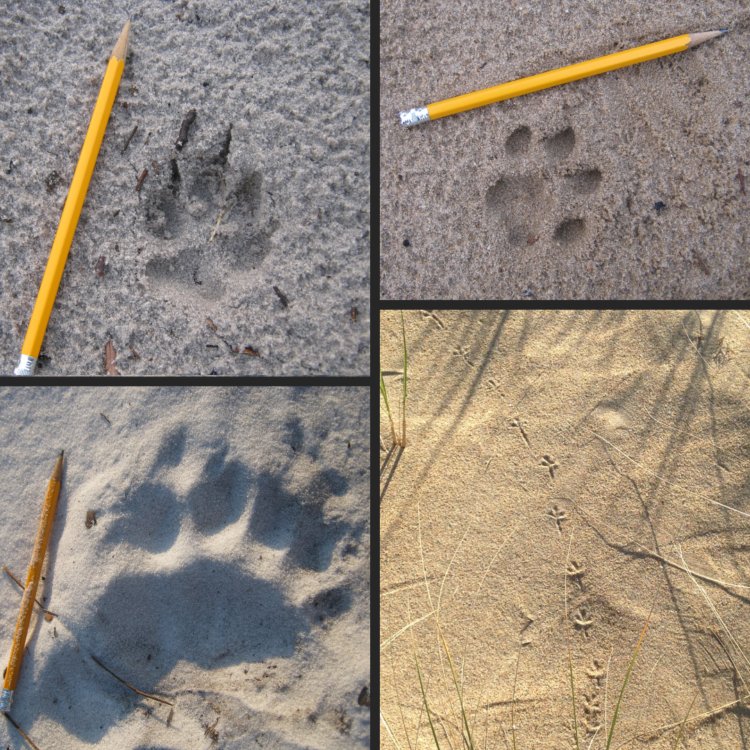
Pro tip: Always leave something for scale when photographing animal tracks!
Tracks are one of the most familiar and well-studied signs of wildlife to look for in nature. You’ll find tracks wherever a wild animal has passed by on foot, so they are a great way to know who’s in the neighborhood.
Wherever you have soil or ground in which an animal’s feet or body can leave a depression, you can expect tracks. Some substrates are especially helpful in revealing animal tracks. These include:
- Sand
- Snow
- Mud
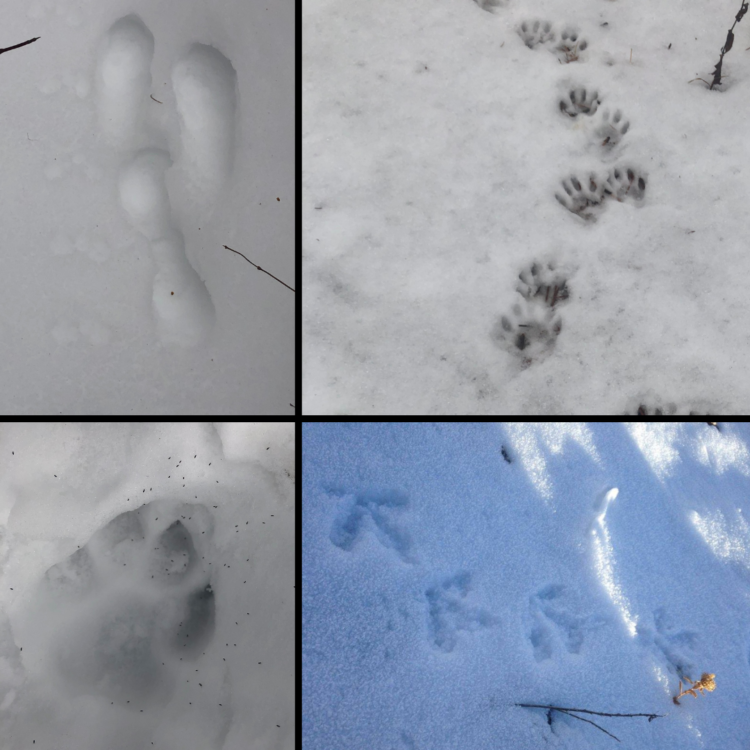
Sand and snow can be relatively easy to compress, so wildlife of all sizes can leave an imprint. Mud can sometimes be less movable, but can harden and preserve tracks so you can view them after they were made. In fact, some tracks in mud have lasted tens of millions of years by becoming fossilized, giving insight into prehistoric animals.
2. Game trails
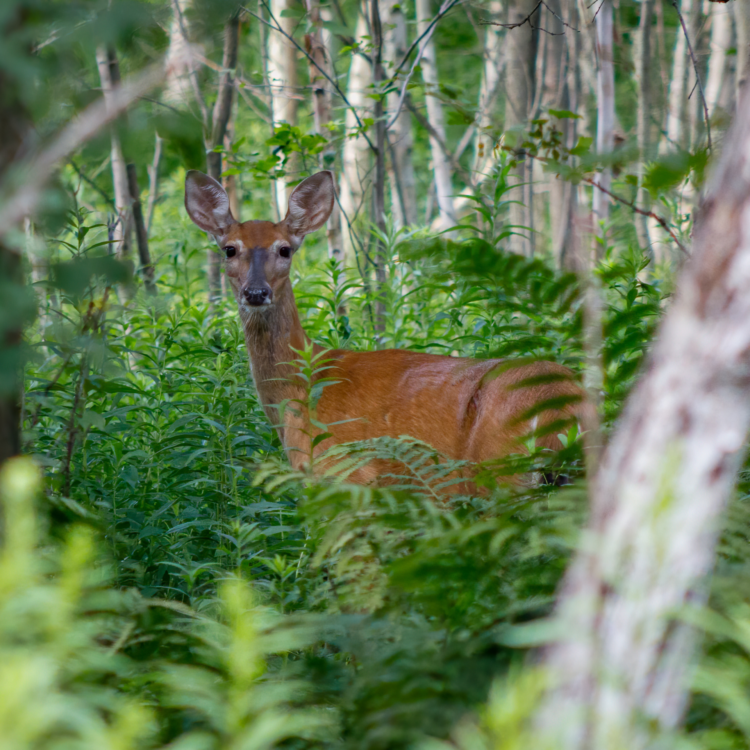
Game trails are another great wildlife sign to look for in nature. If animals frequently use a given area or travel route, they can trample local vegetation. This leads to more open areas along their path of travel. These little paths are named game trails because they were originally described for deer “highways” in the woods that hunters used to find them.
The best way to find game trails is to look broadly over a vegetated area and identify areas where it grows less dense. Often, just by taking a deep breath and pausing to look, you can notice small paths through shrubs or grass. Spotting tracks or broken twigs along such a path is another great way to tell if its a game trail.
Game trails not only let you know that wildlife are using a particular area, but they can also help you find them. If you’re planning on doing a sit spot to watch what wildlife shows up, try positioning yourself to view a game trail. You may be surprised what comes along!
Once a game trail has been established, it becomes a convenient road for lots of other species. They may use the trail at different times of day or different seasons. But just like people, they take advantage of how easy paths make it to get from A to B.
3. Scat
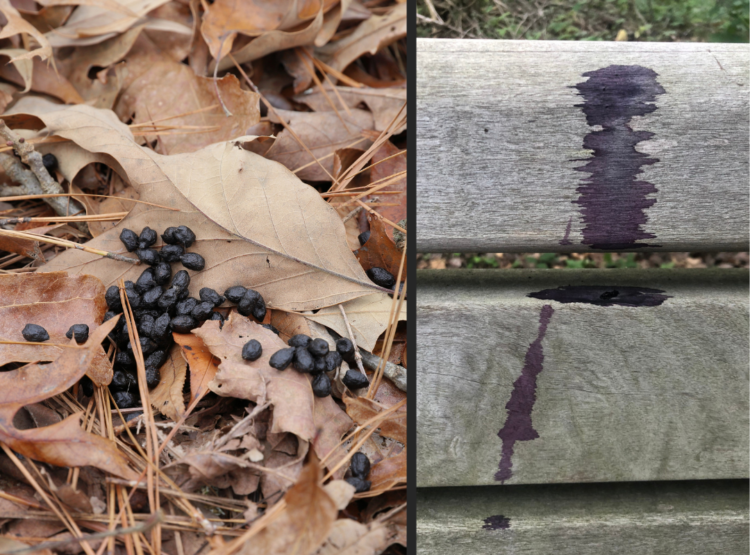
If there’s one sign you can count on animals leaving behind, it’s poo. Everybody’s gotta do it! Very few species of wildlife are discrete about where they poo. Because of this, finding wildlife poop (also called scat or droppings) is a great way to pick up on the presence of interesting animals.
In fact, many species of mammals will deliberately poop in obvious places. They do this as a way of marking their territories and making it clear that an area belongs to them. You can think of this similarly to birdsong. If you find some scat nicely laid out on a log or in the middle of a path or boardwalk, chances are that is a signpost: “Private Property, No Trespassing!”.
While identifying wildlife poop will need its own post, it’s worth knowing to keep an eye out for it when you’re outdoors and looking for animals. If you live in places with bears or other dangerous wildlife, being poo-aware is actually a smart safety measure.
4. Sawdust and wood chips

Many animals feed on parts of trees, or use them to construct their homes, whether for nesting or surviving the winter. As in a carpenter’s shop, you’ll see plenty of evidence from their hard work. Sawdust and wood chips accumulate quickly on the ground around trees and are a great clue for wildlife detectives.
Here are some examples of species that might leave behind piles of wood scraps:
- Carpenter ants, sawflies, and wood-boring beetles – more of a fine sawdust
- Woodpeckers – chips of wood, like someone aggressively using a chisel
- Beavers and porcupines – scattered chunks of bark
- Bears, deer, and elk – longer strips of bark, often still hanging from a tree
If you see any of these signs, pay close attention to the type of damage to the tree. This can tell you a lot about the animal responsible!
5. Bones and shells
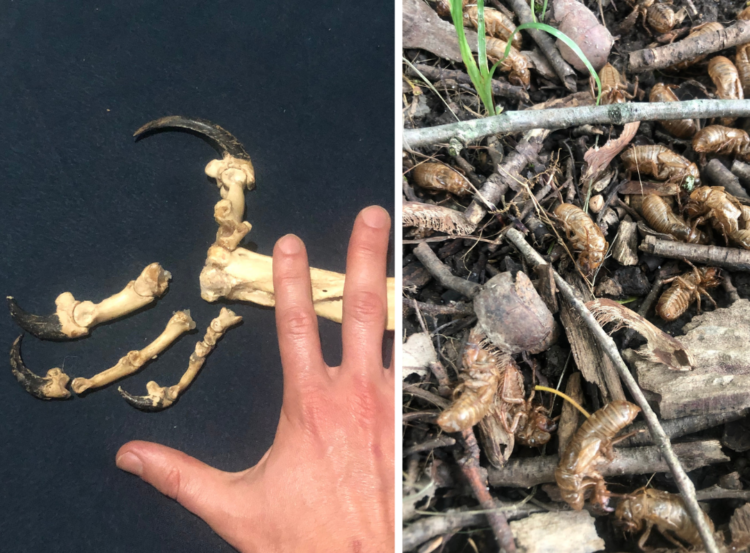
The hard materials that animals use for their skeletons can often outlast the rest of their bodies. This means that when an animal has died even quite some time ago, you may still find “hard” evidence of their existence. Of course, some animals have hard materials on the inside, while others have them on the outside.
For example, invertebrates like snails, arachnids, and insects have hard shells on the outside, and are squishy on the inside. Mammals, birds, bony fish, and reptiles have bones on the inside which can last a while. As you know, some of these can even become fossilized, thus lasting millions of years.
Insects and arachnids, which have their shells (or exoskeletons) on the outside, can leave behind hard materials without dying. In a process called molting, they will actually break out of their shell and form a new one as they grow. This allows them to increase in size or metamorphose into a whole new body shape without being restricted by their casing.
The hard part left behind is called an exuvium. You may be familiar with these from cicadas and dragonflies, which often leave obvious exuvia behind.
6. Holes in the ground or trees
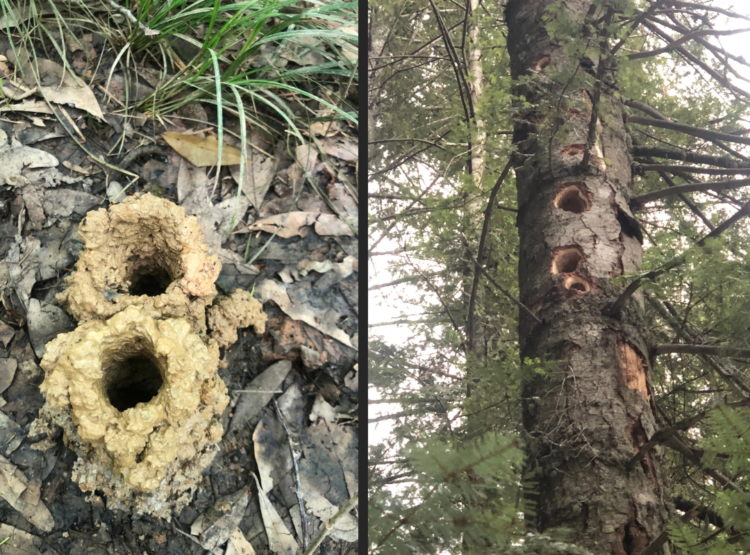
Among signs of wildlife to look for in nature, holes are some of the most reliable. That is, if you know where to look! Many different animals dig holes in the ground, or in trees, to make themselves a quick and easy home.
If you find a hole outside, pay attention to key characteristics to solve the mystery of whodunnit:
- What did they dig the hole in? Sand? A living or dead tree? Mud?
- How big around is the hole?
- Is it perfectly round or irregular?
- Can you see the digging material? Is there sawdust or piled mud? Is it close or far away?
7. Wallows and bedding spots
Everybody likes to take a load off once in a while. If you’re a large animal it can be hard to find safe or comfortable places to rest out in nature. Animals that are too big to build a home or dig a hole will often tramp down dense vegetation or scrape out a depression in the ground.
These bedding spots provide a soft place to rest, often with slightly more moderate temperatures than the air above. These bedding spots are also less exposed to wind.
When it’s time to cool off, animals like pigs will dig depressions in wet areas to splash around in the mud. This helps them combat parasites, among other things.
8. Leaf damage
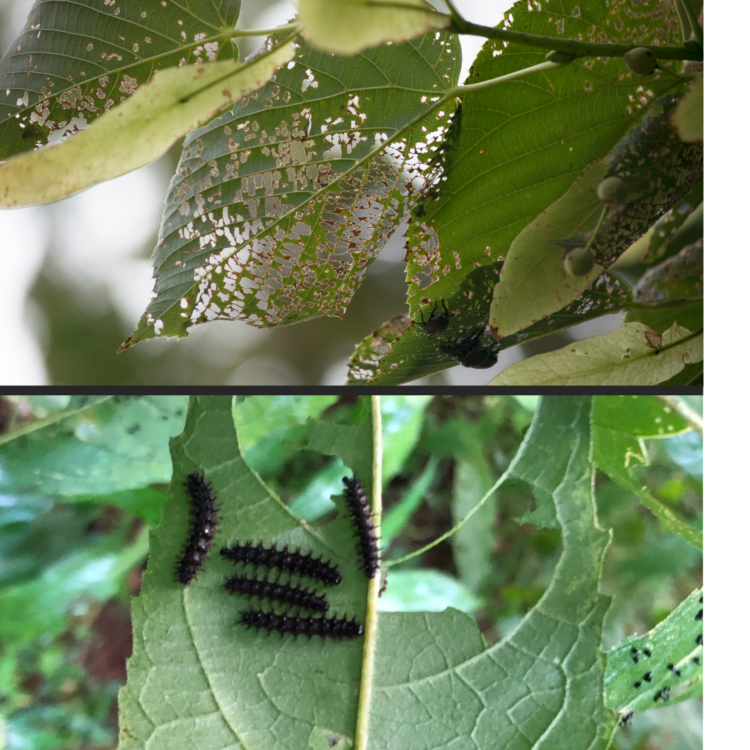
Green leaves are a smorgasbord for many herbivores in the terrestrial food chain. Although plants use many clever strategies to protect them, some leaves always get chomped. Chewed leaves are additional signs to look for in nature, and are sure to deliver if you pay attention.
Here are some common types of leaf damage and their likely culprits:
- Winding “trails” within the leaf tissue – leaf miners
- Skeletonized leaves – various caterpillars (order Lepidoptera)
- Wilted leaves – sucking insects like aphids or true bugs (order Hemiptera)
- Galls – Various wasps, flies, and even mites
Often, the artist is not far from their work of art. Try turning leaves over, or inspecting nearby, intact leaves to look for leaf-eaters.
9. Nests, cocoons, and eggshells
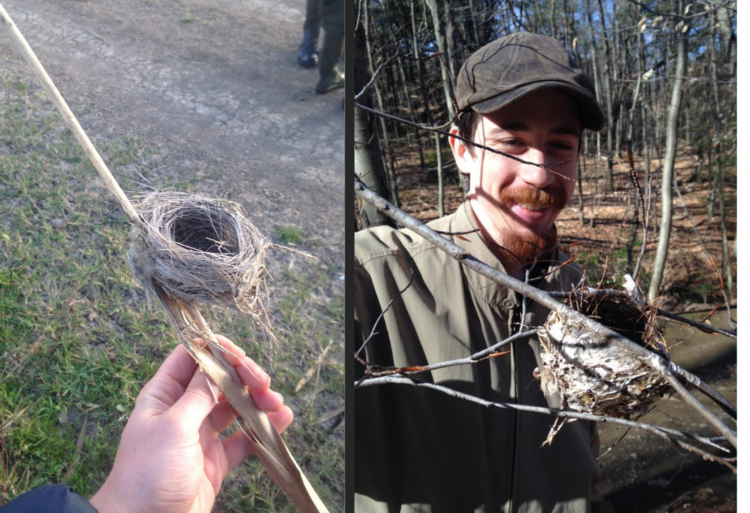
During winter, when plants have lost their leaves, many signs of wildlife become strikingly obvious in bushes and trees. Where previously a shroud of leaves had hidden them, all is suddenly revealed. As a result, you can get a near insight into animal lives by checking out their homes when they are done with them.
For example, you might find:
- birds nests in shrubs, trees, bushes, and grass
- the pupa or cocoons of different insects
- signs of hatched nests like eggshells
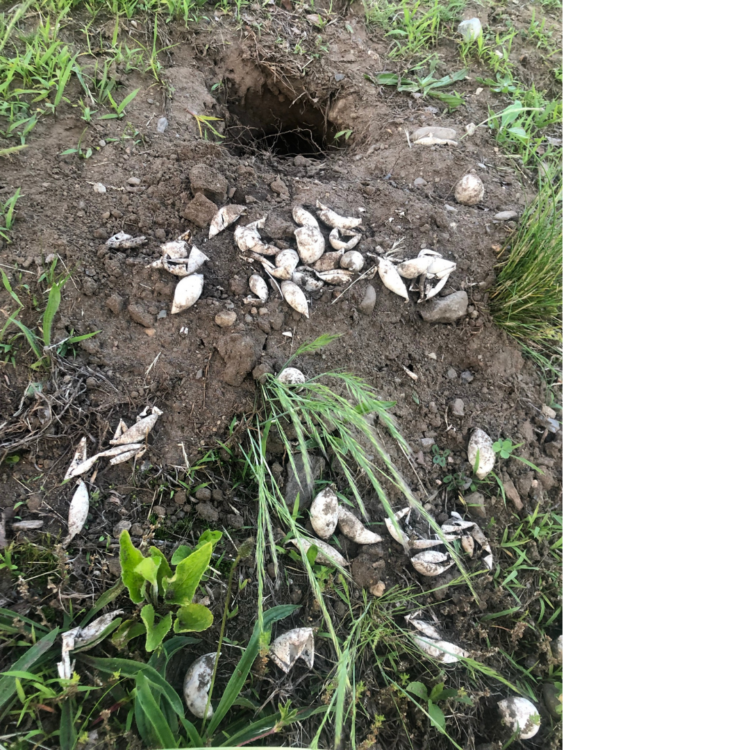
You’ll also come across things like eggshells where other egg-laying organisms have had a nest. For example, soft, flexible eggshells lying on the ground will tell you that reptile babies hatched there. In the summer, keep an eye out for those in parks and gardens near water. You may just find the site of a turtle nursery!
10. Hair and feathers
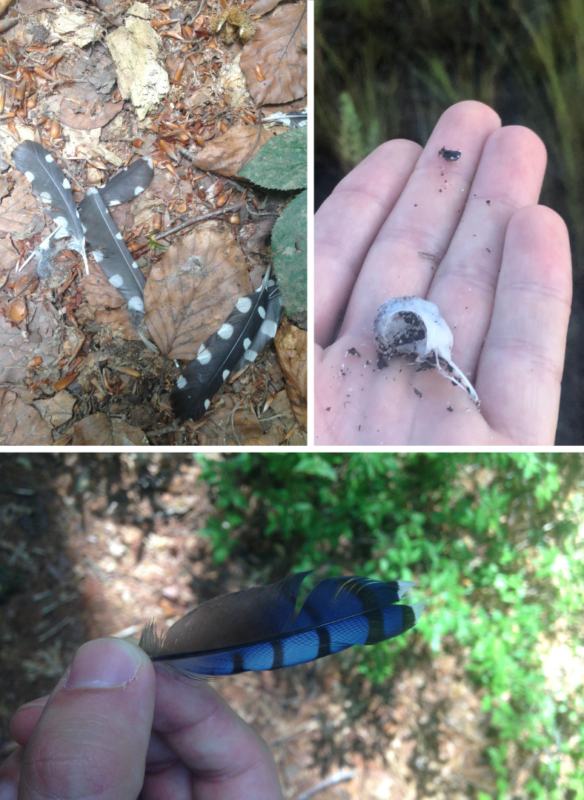
Going about their daily lives, many animals will shed a little fur, or a scale, or a feather here and there. It’s not uncommon to come across these wildlife signs, and they can tell you a lot about their former owners.
Of course, dramatic events like attacks by predators, or the death of an animal can leave a lot more! If you see a dense collection of fur clumps or feathers in one particular spot, you could have stumbled upon a kill site. This is a place where a predator actually attacked their prey.
Other signs like tracks around the kill site might give you more info on how exactly it all went down.
Want to know more?
Here are some great books that my nature mentors and I have used to learn wildlife signs:

Practical Tracking by Mark Elbroch

Tracks and Trailcraft by Ellsworth Jaeger

Scats and Tracks of the Northeast by James Halfpenny – There are regional editions of this book for most major bioregions of North America!
Thanks for reading!
What kind of wildlife signs have you come across outdoors? Share with us in the comments! If you have any other topics you’d like to see on the blog, please get in touch via the Contact page.

